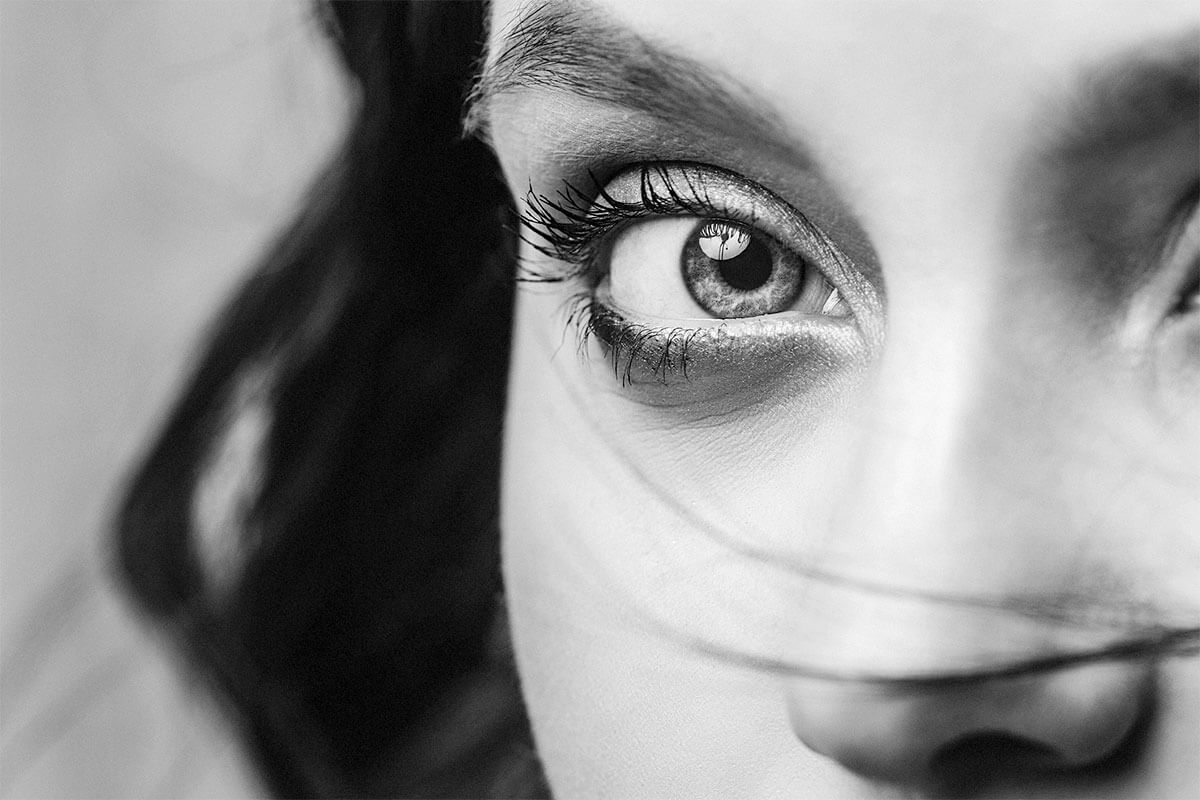
What Are Goosebumps?
Goosebumps, known in medical parlance as piloerection, are caused by contractions in small muscles that are connected to hair follicles. This creates a depression on the skin’s surface, resulting in the hairs standing upright. Its name comes from the resemblance of skin to that of a plucked bird.
It is believed that this is an inherited trait from our prehistoric ancestors. They had thicker coats of body hair, which created insulation and kept the body warm when stimulated. While our layer of body hair is too thin to make this insulation process effective, the muscle contraction and increased electrical activity does help to stimulate the body, which is why goosebumps that are caused by the cold go away when you warm up.
Goosebumps are also associated with a wide range of emotional situations. People talk about getting goosebumps when scared, or while listening to rousing songs or watching a high-stakes sporting event. Goosebumps can be triggered by the subconscious release of the testosterone hormone. When high levels of stress occur, whether positive or negative, testosterone is released to help in the fight-or-flight decision-making process. This cues goosebumps, and we start to feel our hair prick up.
Goosebumps may be a little mysterious, but generally speaking, when you feel them cropping up, all you need to do is take a deep breath, relax a little, and maybe put on a sweater.

What Is Déjà Vu?
Have you ever had a sneaking suspicion that you’re experiencing a scenario that’s already happened? Then you’ve dealt with déjà vu. The term is (as you may have guessed) French, and the literal translation means “already seen.” But in everyday life, déjà vu refers to the weird feeling you get when you’re in a situation that feels like you’ve already lived it, and are somehow living it again.
Research shows that there’s a direct relation between déjà vu and seizures. Specifically, the phenomenon is linked to temporal lobe epilepsy and has been described in people with a known medical history of the condition.
But plenty of people have experienced déjà vu who don’t have a history of epilepsy or seizures. In healthy people, déjà vu is believed to be caused by a memory mismatch, where a new experience is stored in long-term memory and completely bypasses the short-term memory. In this scenario, you have that weird sensation that you’ve been through an experience before when in reality, it’s just your brain’s memory system having a glitch.
There are also other causes of déjà vu that might have more to do with your daily habits than your medical history. One of the most common causes of déjà vu is being overly distracted. Sleep deprivation is another. If you’re walking through life in a perpetual sleep-deprived haze, you might feel like you’re reliving experiences when in truth, you’re just too exhausted to parse reality from dreams.

Why Do We Have Wisdom Teeth?
Wisdom teeth are just like any other molar in your mouth. For the first few years of a human’s life, they eat only soft foods and have no need for molars to crush and grind. Around the age of six, the first set of molars come in. When a person reaches 12, another set appears. The wisdom teeth are the final set of molars that appear between ages 18 and 21.
Early humans were hunter gatherers who survived on leaves, roots, meat, and nuts — things that required a lot of crushing ability. The more grinding teeth you have, the easier it is to eat tough foods. As humans evolved, they began to cook their food, making it softer and easier to chew. Having three full sets of molars became unnecessary.
Additionally, early humans had larger jaws than we do today — which could support more teeth. Over time, as the need for super-powerful jaws decreased, human jaws got smaller. But the number of teeth stayed the same. That’s why today, many people need to get their wisdom teeth removed in order to create more space.
Because wisdom teeth aren’t necessary for modern humans, they may someday cease to exist at all.
More Interesting Reads

Why Do We Sneeze?
The primary purpose of a sneeze is straightforward — sneezes help to remove irritants from the nasal passage. These irritants include dust, dirt, pollen, smoke, or anything else that could possibly get stuck in there. Blowing it all out is the best way your body can clear it.
Sometimes sneezes seem to come in pairs or more. Some people — maybe even you — have a specific number of sneezes that they produce each time. If someone sneezes three times, every time, their sneezes might not be as powerful as a single-sneezer’s is, and it requires three attempts to get rid of the irritant.
Sneezing also plays an important role in fighting the spread of bacteria when we’re sick. The body’s natural reaction to infection is to produce mucus in an effort to trap the bacteria. Once trapped, it’s time to get rid of it. Sneezing is the most efficient way to expel mucus from the body. It’s also the most efficient way to spread bacteria, so remember to cover your mouth and nose.
Even when there aren’t irritants or bacteria present, your nose produces mucus to catch potential irritants before they can get to your lungs. Sometimes, through normal production, the nasal passage gets too full and needs to be reset. Whenever you get a random sneeze that seems to be out of nowhere, it’s most likely just to reset your nasal passage.
Sneezing is still something of a mystery, however, as there are some causes that don’t seem to make much sense. About one in four people sneeze when they look into a bright light. This is called a photic sneeze reflex, and it’s an inherited genetic trait. The leading theory is that a certain stimulation of the optical nerve causes the same sensation in your brain as irritation in the nose, but the true cause still eludes researchers.

Why Do We Blink?
The average person blinks about 12 times per minute, 10,000 times per day, and 4.2 million times per year. That’s a lot of blinking.
The most obvious reason that we blink is to lubricate our eyes. Lubricating tears are constantly being produced in your body and are made up of three layers: the mucous layer so that it adheres to your eye; the aqueous layer, which is a thick layer that hydrates and keeps bacteria away; and the oily layer, which prevents the other two layers, which are predominantly water, from evaporating. Every time you blink, these tears are pulled across the surface of your eye to keep it lubricated and prevent the spread of bacteria.
Additionally, blinking helps clear dust and particles that are continuously getting into your eyes. When your eyes water, the extra fluid helps cleanse and soak up the debris, while the blinking is like a windshield wiper pushing it away.
Blinking also works as a reflex in response to external stimuli. Your eyes can close in 0.1 seconds after stimulus is detected. Sometimes the stimulus is the bright bathroom light at 3 a.m. Sometimes it’s a fistful of sand. This is called the corneal reflex, and it is designed to prevent as much debris as possible from entering and damaging your eye.

Why Do We Yawn?
It was long believed that yawning was a respiratory function. When your body is running low on oxygen, a yawn is triggered to force a deep inhale and exhale. This increases oxygen levels in the bloodstream, and the yawn itself raises your heartbeat to pump the oxygen-rich blood throughout the body.
While this theory is still possible, or is, perhaps, one aspect of yawning, it’s not the whole story. Instead of oxygen deprivation, researchers now believe that the primary function of yawning is regulating temperature. Your brain is the most energy-hungry organ in your body. It uses about 40% of your total metabolic energy. All that energy means that your brain tends to run hot and needs some way to cool down. Your brain uses yawning like your computer uses fans.
During a yawn, cold air is brought in through the mouth. The muscles in your jaw and around your skull contract and stretch, which increases blood circulation in the area. The air cools the blood, and the increase in heart rate pumps the cooler blood to your brain. A cooler brain is a more alert brain.
Your body knows how to be efficient. If the surrounding air is cooler, yawning will be more effective. It might sound strange, but studies have shown that people yawn more frequently in cooler temperatures. People yawned 21% more often when the outside air was 70 degrees Fahrenheit versus 98 degrees (body temperature). Similar results were also found with other species of animals.
There are dozens of other triggers associated with yawning, however. Obvious culprits like boredom and drowsiness mean your brain needs to be stimulated, but yawning can also be triggered by other events like anxiety, hunger, or even a change of activity. Any time your brain needs some extra focus, it might trigger a yawn for a refreshing cool down.











